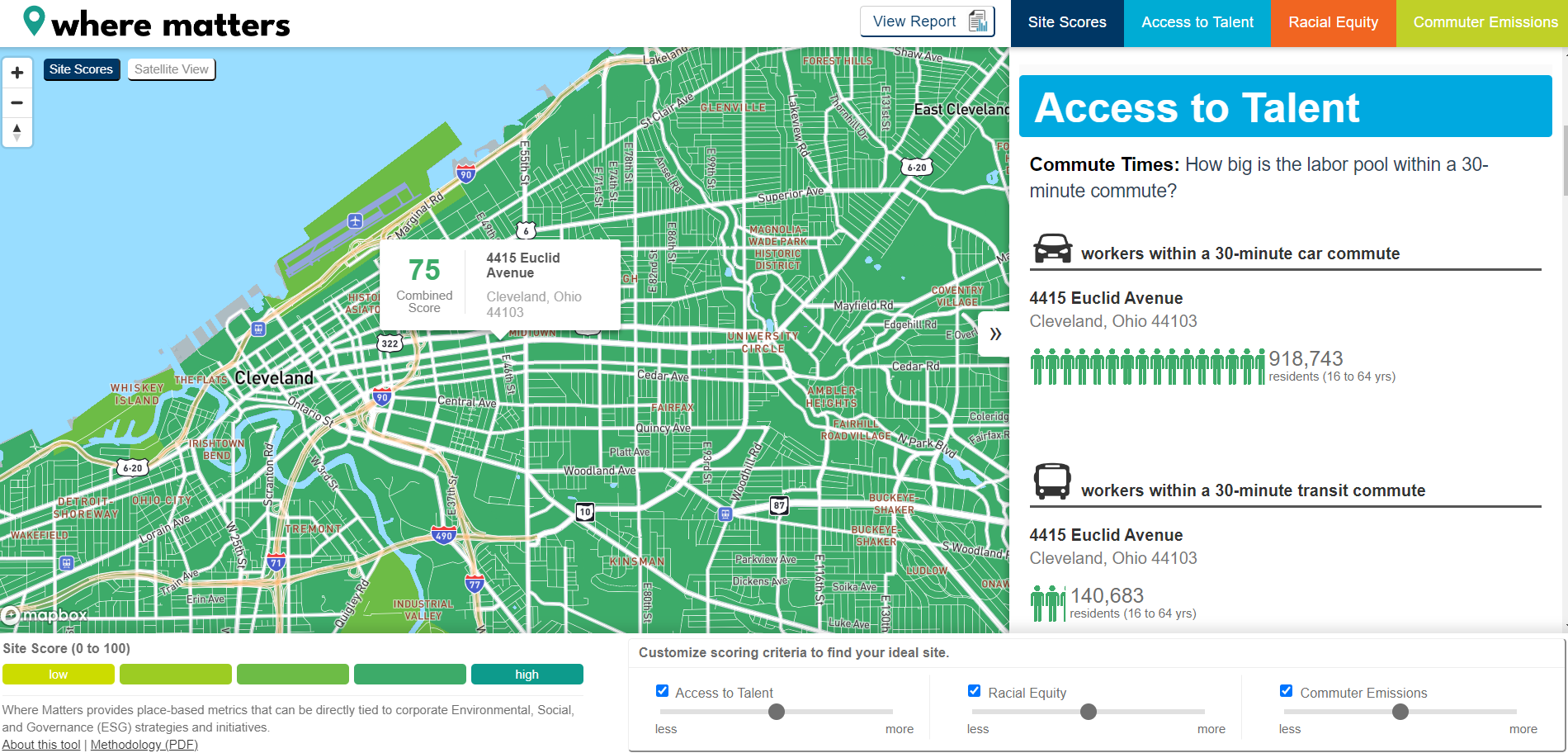The traditional view of housing affordability is 30 percent of income. Under this view, an astonishing three out of four U.S. neighborhoods are considered “affordable” to the typical household. However, we recognized that this benchmark failed to account for transportation costs, which are typically a household’s second largest expenditure.
Transportation costs also vary dramatically within and across regions. Housing located in outlying areas that require residents to rely on cars passes along hidden costs, often making such “affordable” housing unaffordable.
Building on the premise and application of the Location Efficient Mortgage® (LEM), CNT developed a tool to measure the true affordability of housing based on its location: The Housing and Transportation (H+T®) Affordability Index (funded by the Brookings Institution's Urban Markets Initiative with a companion report developed with our partners at the Center for Transit-Oriented Development ).
The first phase of H+T was released in January 2006 and specifically examined the variables that inform housing and transportation costs in Minneapolis-St. Paul, Minnesota. The key finding, summarized in a Brookings report, was that location matters, and it can affect the true cost of housing when transportation costs are factored in.
The initial Index received much attention from policy makers for its benefits to planners and transit-oriented development (TOD) advocates, and it served as the basis for several additional research projects. In 2006, the Center for Housing Policy released A Heavy Load: The Combined Housing and Transportation Burdens of Working Families, using CNT’s analysis of 28 metro regions to document the cost burdens of low to moderate income families based on location.
In early 2008, we expanded the H+T Index to include neighborhood-level data for 52 US metropolitan areas, again with support from the Brookings Institution. This effort resulted in an interactive mapping website where users could see H+T Index results at the neighborhood level, with additional information on auto ownership, transit use, housing density, and other community characteristics.
In 2009, a new greenhouse gas analysis was included on the website, providing two views of urban greenhouse gas emissions associated with household auto use.
In March 2010, we expanded the Index to 337 metros in the United States, providing coverage for more than 80 percent of the US population.
Today, the Index allows users to view housing and transportation data as maps, charts, and statistics for nearly 900 metropolitan and micropolitan areas—covering 89 percent of the US population. The H+T Index has been employed to guide policy decisions throughout the country, from affordability legislation in El Paso, TX and the State of Illinois, to long-range plans in the San Francisco Bay Area and Chicago metropolitan region.
Later in 2013, an updated H+T Index and website will be released. Specifically, the American Community Survey data that much of the Index is based on will be updated to the most recent data available at the Census block group level: the 2007-2011 5-year estimates. Additionally, transit connectivity will be measured for more metro areas; nearly all regions with populations of 250,000 will be covered. Model estimates will be constructed to be comparable to previous years’ data, allowing for longitudinal analyses with both the 2000 and the 2005/9 Indexes.
By linking the role and cost of transportation to housing, CNT provides invaluable data-based analysis that helps create healthier, more sustainable urban communities. Our work in the area of transportation and community development exemplifies our ability to combine innovative thinking and solid research to produce new tools that support urban sustainability.





 Strengthening Transit Through Community Partnerships
Strengthening Transit Through Community Partnerships